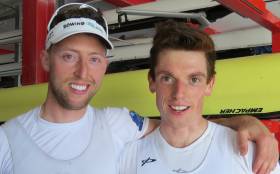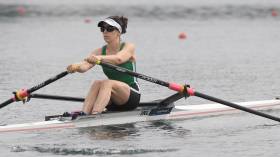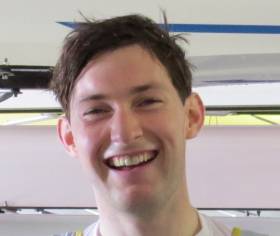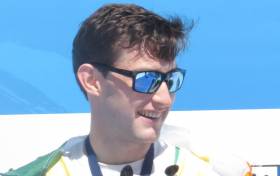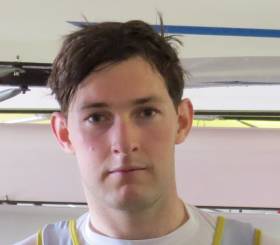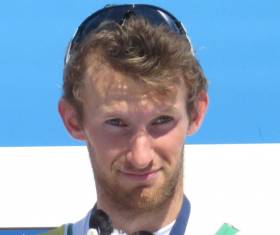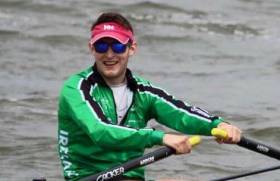Displaying items by tag: World Rowing Championships
O'Donovan and O'Driscoll Fifth in Quarter-Final at World Championships
#Rowing: Shane O’Driscoll and Mark O’Donovan took fifth in their quarter-final of the pair at the World Rowing Championships in Plovdiv. Canada won well, with New Zealand and the Czech Republic taking the other A/B semi-final places. The Ireland crew battled well to push ahead of Denmark, but third and qualification for the A/B Semi-Finals was beyond them. They will compete in the C/D Semi-Finals.
Earlier, Philip Doyle and Ronan Byrne had won their repechage of the double sculls to secure their place in the A/B Semi-Finals.
World Rowing Championships, Plovdiv, Bulgaria, Day Five (Irish interest)
Men
Pair – Quarter-Final Four (Three to A/B Semi-Finals; rest to C/D Semi-Finals): 1 Canada 6:26.04, 2 New Zealand 6:30.36, 3 Czech Republic 6:35.01; 5 Ireland (M O’Donovan, S O’Driscoll) 6:44.28.
Double Sculls – Repechage Four (First Two to A/B Semi-Final):
Ireland (P Doyle, R Byrne) 6:16.96, 2 Bulgaria 6:20.15.
Remarkable Win Sends Doyle and Byrne Into Semi-Finals
#Rowing: Philip Doyle and Ronan Byrne had a remarkable win in their repechage at the World Rowing Championships here in Plovdiv, Bulgaria. The new Ireland double shot away from the start and opened a clearwater lead over all five of their opponents. Russia and then, over the second half of the race, pushed up but could never catch the Irish, who won by over three seconds.
World Rowing Championships, Plovdiv, Bulgaria, Day Five (Irish interest)
Men
Double Sculls – Repechage Four (First Two to A/B Semi-Final): Ireland (P Doyle, R Byrne) 6:16.96, 2 Bulgaria 6:20.15.
Walsh Continues Winning Run for Ireland at World Championships
#Rowing: Denise Walsh took an excellent first place in her semi-final at the World Rowing Championships in Sarasota Bradenton in Florida today, making it two wins out of two races for Ireland on the day.
The Skibbereen lightweight sculler took a slight lead over Mary Jones at half way, with Emma Fredh of Sweden in third. These three then moved away from the rest. Walsh would not let either challenger head her – at the finish the trio finished in the same order, with less than a second covering them.
Kirsten McCann of South Africa won the first semi-final from Patricia Merz of Switzerland.
Earlier, Paul O’Donovan had won his semi-final of the lightweight men’s single sculls.
World Rowing Championships, Sarasota-Bradenton, Day Five – Irish interest:
Men
Lightweight Single Sculls – A/B Semi-Final One (First Three to A Final; rest to B Final): 1 Ireland (P O’Donovan) 6:55.30, Switzerland (E Schmid) 6:59.04, 3 Brazil (U Batista) 7:00.47.
Semi-Final Two: 1 Norway (K Brun) 6:54.02, 2 New Zealand (M Dunham) 6:55.68, 3 Germany (L Wichert) 6:57.11.
Women
Lightweight Single Sculls – A/B Semi-Final Two (First Three to A Final; rest to B Final): 1 Ireland (D Walsh) 7:45.89, United States (M Jones) 7:46.54, Sweden (E Fredh) 7:46.78.
Semi-Final One: 1 South Africa (K McCann) 7:39.55, 2 Switzerland (P Merz) 7:39.63, 3 The Netherlands (M Keijser) 7:49.17.
O'Donovan Wins Semi-Final and Brazil Snatch Place at World Rowing
#Rowing: Paul O’Donovan took first in his semi-final and qualified for the A Final at the World Rowing Championships in Sarasota Bradenton in Florida today. The Skibbereen man came through in a race with an exciting finish. Michael Schmid of Switzerland led through halfway, but O’Donovan tracked him and drew level at 1500 metres. He passed him in the next few strokes and went on to win by over a length. Behind the two, Uncas Batista of Brazil took the final qualification spot – after Poland’s Artur Mikolajczewski completely ran out of steam approaching the line.
World Rowing Championships, Sarasota-Bradenton, Day Five – Irish interest:
Men
Lightweight Single Sculls – A/B Semi-Final (First Three to A Final; rest to B Final): 1 Ireland (P O’Donovan) 6:55.30, Switzerland (E Schmid) 6:59.04, 3 Brazil (U Batista) 7:00.47.
O'Donovan Lays Down Marker as Hrvat Capsizes at World Rowing
#Rowing: Paul O’Donovan saw off the challenge of Lars Wichert of Germany to win his quarter-final at the World Rowing Championships in Florida. The Skibbereen lightweight single sculler started well, stayed alongside Wichert in the middle stages, before pulling into a clear lead over the German by 1200 metres. From there he moved away. He won convincingly. Wichert and Lukas Radonic of Croatia took the remaining qualification places for the A/B Semi-Finals.
There was a major stroke of bad luck of Rajko Hrvat of Slovenia. He was leading the final quarter-final only to catch a crab while just a few hundred metres from the line. He capsized and his chances of contending for a medal ended.
Earlier, Sanita Puspure had won her repechage to move through to the A/B Semi-Finals of the women's single. The Ireland women's pair will compete in the B Final. They finished fourth in their repechage.
World Rowing Championships, Sarasota-Bradenton, Florida – Day Four – Irish Interest:
Men
Lightweight Single Sculls – Quarter Final Three (First Three to A/B Semi-Final; rest to C/D Semi-Finals): Ireland (P O’Donovan) 6:56.99, 2 Germany (L Wichert) 7:01.74, 3 Croatia (L Radonic) 7:04.54.
Women
Pair – Repechage (First Two to A Final; rest to B Final): 1 Britain 7:25.99, 2 Germany 7:3.34; 4 Ireland (A Keogh, A Crowley) 7:41.13.
Single Sculls – Repechage One (First Two to A Final; rest to B Final): 1 Ireland (S Puspure) 7:36.16, 2 Czech Republic (L Zabova) 7:45.98.
Paul O'Donovan Wins First Race at World Rowing
#Rowing: Paul O’Donovan won his heat of the lightweight single sculls convincingly at the World Rowing Cchmpionships in Florida. The defending champion had over ten seconds to spare over Uncas Batista, the current champion in the World Under-23 class. O’Donovan now moves forward to a quarter-final.
Earlier Mark O’Donovan and Shane O’Driscoll had also won their heat of the lightweight pair with plenty to spare.
World Rowing Championships, Sarasota-Bradenton, Florida – Day One – Irish Interest:
Men
Lightweight Pair – Heat One (First to A Final; rest to Repechage): 1 Ireland (M O’Donovan, S O’Driscoll) 6:33.20, 2 Britain (J Cassells, S Scrimgeour) 6:38.57, 3 Italy 6:40.39.
Lightweight Single Sculls – Heat Three (First Four to Quarter-Finals; rest to Repechages): 1 Ireland (P O’Donovan) 6:54.68, 2 Brazil 7:05.75, 3 Italy 7:09.88, 4 Thailand 7:17.50.
Ireland Team Leave for World Rowing Championships
#Rowing: The Ireland team set off for the World Rowing Championships in Florida today. Gary O’Donovan accompanied the team, and was in good form despite having to pull out of competition due to a viral infection which has limited his training. He travels as reserve. The World Championships will start in Sarasota-Bradenton on Sunday (September 24th) and continue until Ocotber 1st.
Gary O'Donovan Out of World Championships
#Rowing: The Ireland team for the World Rowing Championships has been weakened by the non-availability of Gary O’Donovan through illness. The Skibbereen man formed the lightweight double with his brother Paul which took silver at the Olympic Games in 2016. Their 2017 campaign brought them silver at the European Championships and silver and bronze in World Cup regattas. Paul O’Donovan will now defend his World Championship title in the lightweight single sculls at this year’s regatta, which begins on September 24th in Sarasota-Bradenton in Florida.
Gary O’Donovan will travel to the Championships as a spare.
Ireland Team for World Rowing Championships, Sarasota-Bradenton, Florida, September 24th-October 1st:
Men
Pair: F McQuillan-Tolan, P Boomer. Lightweight Pair: M O’Donovan, S O’Driscoll. Lightweight Single Sculls: P O’Donovan
Women
Pair: A Crowley, A Keogh. Single Sculls: S Puspure. Lightweight Single Sculls: D Walsh.
World Rowing Championship Organisers Say Irma Damage 'Limited'
#Rowing: Hurricane Irma’s impact on Florida left a lot of those interested in the World Rowing Championships, which are set to take place in Sarasota from September 24th to October 1st, worried. Immediately after the storm, this was a statement from the local organisers:
“The organizing committee of the 2017 World Rowing Championships has started a complete assessment of the impact of Hurricane Irma. The OC is in constant communication with local and state officials to coordinate the recovery initiatives in the area as well as with the airports, hotels, transport partners and vendors.
“The Sarasota/Bradenton area did not come under the direct impact of the hurricane as predicted thus, luckily, damage is limited. The area is still under movement restrictions until all services are restored and roadway damage is cleared.
“The 2017 World Rowing Championships staff is working diligently along with the support of FISA and USRowing to ensure a safe and successful World Championships.
Further updates will follow in the next 24 to 48 hours.”
O'Donovan and Lightweight Pair Race Into World Rowing Finals
#Rowing: Paul O'Donovan won his semi-final after another exciting tussle and the Ireland lightweight pair also qualified for their A Final at the World Rowing Championships in Rotterdam today.
Lightweight sculler O'Donovan put in a remarkable middle third of the race to move from sixth to second in very hot conditions . He then pushed for the lead, but Rajko Hrvat of Slovenia was a dogged opponent. The two raced to the line - O'Donovan won by just over half a second.
Mark O'Donovan and Shane O'Driscoll reached their A Final by taking second. They raced France for most of the 2,000 metres and were still in touch at the end.
World Rowing Championships, Rotterdam (Irish interest; selected results)
Men
Lightweight Pair A/B Semi-Final Two (Three to A Final; rest to B Final): 1 France 6:30.56, 2 Ireland (M O'Donovan, S O'Driscoll) 6:32.18, 3 United States 6:33.19; 4 Brazil 6:35.07, 5 Italy 6:37.34, 6 Spain 6:40.82.
Lightweight Single Sculls - A/B Semi-Final One (Three to A Final; rest to B Final): 1 Ireland (P O'Donovan) 6:51.71, 2 Slovenia 6:52.31, 3 Germany 6:52.32; 4 Spain 6:53.21, 6 Italy 7:17.33.
Under-23 Quadruple Sculls - B Final (Places 7 to 12): 1 Russia 5:54.0; 6 Ireland (D Buckley, J Casey, P Boomer, S McKeown) 6:01.78.


























